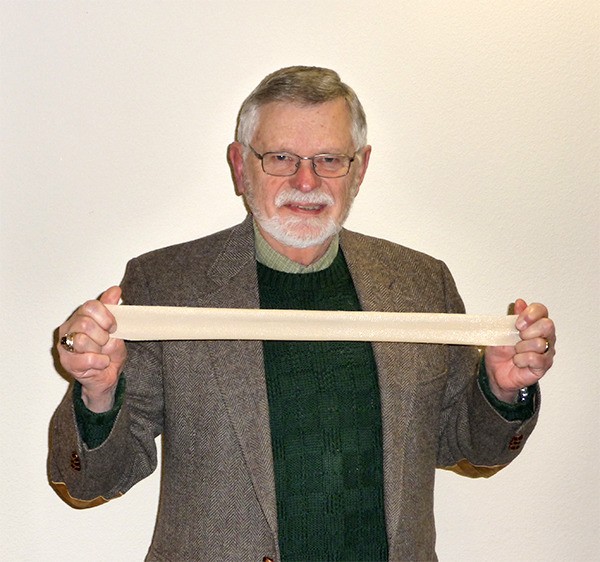It may sound like the stuff of science fiction to most, but for aeronautical engineers like Duane Jensen of Sequim, mining asteroids in space in 10 years will be more fact than fiction.
And, he predicts, bagging up “space junk” and moving it out of harm’s way will become possible, too, thanks to one of his inventions.
Jensen, 70, who spent 33 years at Lockheed-Martin and three years at Boeing, came to Sequim in 2000 and started his virtual company Flexible Composites Inc., which is a technology development firm focusing on high-performance inflatable structures.
He also holds seven patents, the most recent he and two partners received in November for an asteroid capture and release system.
In 2014, NASA had such a capture bag system but Jensen demonstrated he had a better one using a material he and his colleagues invented with thread that acts like coiled springs — it stretches twice its original size and then once released, self-retracts like a rubber band.
According to a summary of his patent, “The present invention is made of components that may be compactly stowed at a size and length significantly less than when deployed and is constructed using materials that are simultaneously expandable, stretchable, abrasion resistant and impervious to ballistics.”
“I went to NASA in December of 2014 and showed my improved concept. We have a material called ‘Stretch-Skin’ and the benefit to NASA is our inflatable bag would be half of the stored volume of its,” Jensen said. “As a result, I was invited to present a paper at the International Space Station Research and Development Conference in July in Boston. There were scientists and engineers from all over the world plus astronauts and cosmonauts.”
Jensen stressed that his company won’t manufacture “Stretch-Skin” but will sell or lease the technology to produce it to other companies. He’s excited about the impact his invention could have on making spacecraft and humans in space safer from orbital debris.
“In space there are 4 million pounds of space junk in the lower orbits where the International Space Station (ISS) is and in 2015, the ISS had to do five maneuvers to dodge space junk,” Jensen explained. “In the past two months the Air Force has said space junk missed the ISS only by a few hundred yards. There’s something called the Kessler Syndrome which says space junk will keep colliding with space junk, creating more space junk and we’re nearing that now. Removing it could become a business.”
He also noted that there are two space mining companies — Planetary Resources near Seattle and Deep Space Industries of Mountain View, Calif. — whose goals are to mine asteroids in 2025.
“A 10-meter (33-foot) water-rich asteroid would be worth $5 billion once it’s processed (for its water to be converted into hydrogen and oxygen rocket motor propellant),” Jensen said. “Our device, attached to a spacecraft, would come up behind an asteroid like a python snake and just wrap around it, capture it and take it to a lunar orbit for mining.”
Since 2000, Flexible Composites Inc. has generated about $1 million in contracts with the aerospace industries and the government, Jensen said.
When he’s not inventing futuristic inflatables, Jensen has written grants for the Boys & Girls Clubs, the New Dungeness Light Station and the Port Townsend Summer Band. His efforts have garnered $400,000 for the nonprofits.



